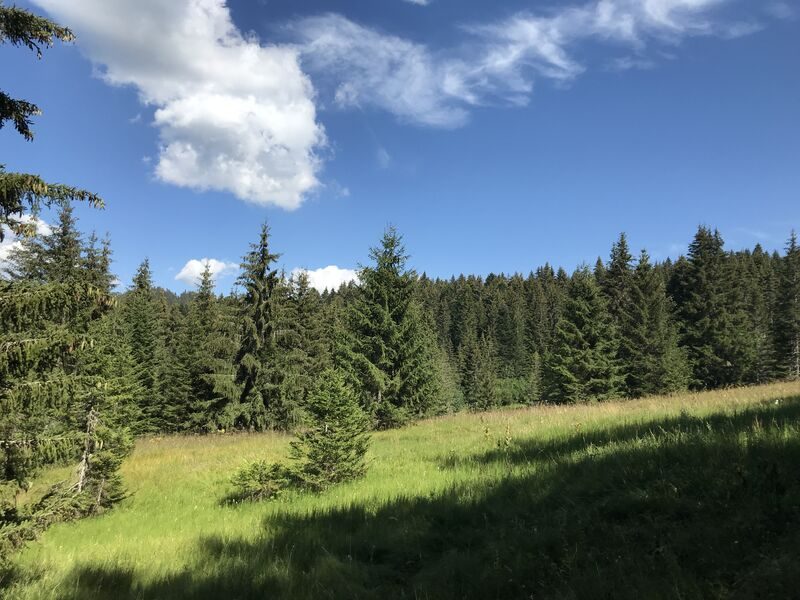Plateau de Loëx

The Loëx plateau forms a superb natural ensemble, both in terms of landscape and biology.
Description
It thus preserves remarkable natural habitat types: Molinies meadows and associated communities, raised bogs, alkaline low marshes and transitional facies...
This limestone plateau is located in the upper montane zone (average altitude 1350 m), in the Haute-Savoie department, in 3 communes: Taninges, Les Gets and Verchaix.
Clayey glacial alluvial deposits have formed alkaline low marshes. Heavy precipitation has caused some areas to evolve into domed peat bogs. The forest is dominated by spruce (spruce-fir or subalpine spruce, depending on altitude).
The Loëx plateau also contains a karstic aquifer of great interest for current and future water needs.
The vegetation is dominated by spruce meadows and woods, with few deciduous trees; while fir remains present below 1400 m altitude, the subalpine spruce forest reigns supreme above. These forests are interspersed with extensive meadows, now threatened by abandonment.
On the southern edge of the plateau, the limestone ridges rise to an altitude of 1,660 m. The average annual temperature (no more than 5°C) and the short growing season (4 to 5 months at most) mean that there is a clear spruce stand on acid soil rich in bilberries.
On the slopes facing south, east and west, on the other hand, a more productive beech-fir forest (where spruce is still present) thrives on a deep schist substrate.
The Loëx plateau boasts a high level of biodiversity, due in particular to the abundance of peat bogs and the wide variety of habitats, alternating between forests, meadows and open areas.
The site is home to 14 habitats of Community interest, including 3 with priority status: Nard grasslands (6230*), active raised bogs (7110*) and wooded bogs (91D0*).
There are several fine active raised bog complexes on the plateau: Les Bounnaz, La Biolle,
tourbière à l'Ouest du Coutard, tourbière au nord des Miches, tourbière de la Joux d'Amont, Les Goyers, Lairon
and Molliex Ouest.
Among the species of Community interest present on the site are three species of butterfly: Azuré de la Sanguisorbe (Phengaris teleius), Azuré des paluds (Phengaris nausithous) and Damier de la Succise (Euphydrias aurinia). On the Loëx plateau, the Damier de la Succise has been observed in the Prizes sector, but is a potential target in other areas. The Azuré des paluds and the Azuré de la Sanguisorbe were observed in the Rosière sector, but are potential on the Mais (presence of the Grande Sanguisorbe or Grande pimprenelle, Sanguisorba officinalis).
Around ten species of chiropteran have been noted on the site, including two of Community interest: the Barbastelle and the Minioptère de Schreibers.
In terms of wetlands, which are abundant and particularly diverse, the habitats present include mullein meadows, sphagnum and bladderwort bog pools, spruce-wooded bogs and various types of sedge "low marsh".
But certain types of forest habitat are just as remarkable, such as cranberry spruce stands and subalpine spruce stands with Sphaignes.
In terms of flora, over 400 plant species have been recorded, including more than 40 remarkable species in the peat bogs and heaths alone, some of which are protected by law. The only plant species of Community interest is the Green Buxbaumia, a moss found in dead wood, mainly coniferous, more rarely deciduous.
Of the five lycopod species found in France, the Loëx plateau is home to four, including the rare Alpine Lycopod.
In terms of fauna, and in particular invertebrates, surveys to date have revealed the presence of 20 species of odonata, 25 of lepidoptera and 6 of orthoptera (locusts). In particular, numerous species of odonata, including the benthic Cordulégastre, are found in the peat bogs.
Rates
Free access.
Opening period
All year round.
Language spoken
-
French
















